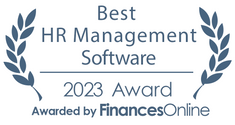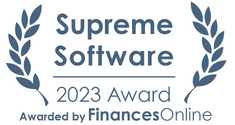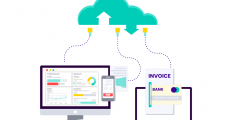What should be your priority SaaS solutions if you are a startup or a small business? The right choice of your initial technology stack can be vital, as you need your business to take off on solid footing with the right tools, without overspending on features you won’t use. You don’t have to stock up on all popular SaaS solutions; it wouldn’t only be practical, but would definitely be expensive.
On average, small businesses will use only around three to five apps to jumpstart their business. Later on, you can add more apps as your business expands or as the situation calls for it, especially with the vast changes made by the COVID-19 pandemic. Plus, many vendors have flexible plans that allow you to scale up your use of their software as your business grows. These key factors, along with other considerations, will be discussed in this SaaS guide for small businesses.

Guide to the Most Useful SaaS Solutions
- SaaS software for businesses with 10 employees or less
- SaaS software for growing small business
- Industry-specific SaaS for small business
- What are the benefits of SaaS for small business?
- What small business features should you look for in SaaS?
- What potential SaaS problems should you know about?
- What are the current SaaS trends?
For the uninitiated, SaaS software is a cloud-hosted, online version of an application that you access through a connected device and which you pay for based on usage. Requiring just a web browser to use rather than software to install on your PC, SaaS significantly reduces capital outlay and operating costs, including purchasing perpetual software licenses.
Early on, companies welcomed SaaS only as an option for their technology requirements. Gradually, small business SaaS adoption and spending have increased. In 2016, the 5-year small business SaaS spend was $55,000 on average. By 2019, it rose to almost $220,000. And with the onset of the global virus outbreak, businesses big and small have further expanded their reliance on SaaS tools, including their spending.
In 2020, a study found that almost 33% of SMBS have spent over $1.2 million on SaaS, and this figure is expected to further increase due to the growing cloud adoption as an impact of COVID-19. Likewise, half of SMBs reported that they will likely go beyond their initial cloud usage plans due to the pandemic.
Source: Flexera's 2020 State of the Cloud Report
With an upward trajectory on SMB’s Saas spending, it can be difficult to choose the best software with the myriad options out there. To help you with the problem, we came up with a list, which we further subdivided into three groups, depending on the type of your company and your development potential.
SaaS Software for Companies with 10 Employees or Less

As a startup with a small team, you only need to have the essential SaaS tools for small business that will allow you to quickly hit the ground running. Here are SaaS solutions that work great even with very small teams:
1. Collaboration Software
Online collaboration apps will allow you to capture and share files, work with your team wherever they are, and connect with them from whatever device. This ensures that everyone on the team is in the loop and on the same page.
Recommended solution: monday.com features a single hub that syncs all project data for easy and highly visible collaboration and communication between teams and members.
Good collaboration software possesses many of the top technologies for business collaboration, shown in the graph below. This means that top collaboration systems either provide built-in support for said features or allow seamless integration with external systems that are capable of such functions.
Top Technologies Businesses Use to Conduct Professional Collaboration
Chat or text: 51%
Chat or text
51%Online meetings: 50%
Online meetings
50%Corporate intranet: 41%
Corporate intranet
41%Document sharing platforms: 24%
Document sharing platforms
24%Project management platforms: 20%
Project management platforms
20%Source: Dimensional Research
Designed by2. Accounting Software
You need to have your financials in order, and accounting software will help you automate financial management, reduce expenses, and accurately report on your financial activities.
Recommended solution: FreshBooks is a lean and mean small business app designed to streamline complex accounting processes, including online invoicing, expense tracking, time tracking, reporting, taxes, and payments.
Recommended solution: Tipalti, a cloud-based account payable (AP) software, provides flexible features that enable small businesses to automate the payments and invoicing processes, including payment remittance, tax calculation, invoicing, payment reconciliation, financial reporting, and compliance management.
3. Project Management Software
You may be taking in more specialized or complicated projects, and a good PM solution can assist you in every stage of the project lifecycle.
Recommended solution: monday.com provides a visual approach to manage all your projects in a single place while at the same time, allowing you to monitor each of them in detail as well as take the right actions, such as setting a deadline, assigning to owners, and collaborating with others to ensure that no task gets past its due date.
Detailed monday.com Review
Project management software is practically a collection of functionalities that, together, make handling projects a lot easier. They usually include the following features:
Most Used Project Management Software Features
Source: eylean
Designed by4. Communication Software
Today’s cloud communication software offers tools to let you connect, work, and link with your employees, customers, suppliers, and stakeholders, anytime and anywhere with whatever connected device.
Recommended solution: Slack brings all your communications together with real-time messaging, archiving, and search function. You can have all your team communication in one place that is instantly searchable and always available.
Detailed Slack Review
5. Customer Relationship Management Software
CRM includes applications to help you build strong relationships with your customers, boost conversations, and improve revenue rates based on customer data coming from multiple interaction channels.
Recommended solution: HubSpot CRM is a free but robust CRM built on top of the HubSpot sales, marketing, and service suite, which helps you manage the entire customer journey.
It’s true that all businesses have customers that they need to build a relationship with; therefore, using a CRM system makes sense. However, some industries benefit more from this type of tool compared to others. Here are the top five sectors that use CRM software the most.
Source: SelectHub
6. Document Management Software
Having a dedicated document management software harnesses digital technologies that let you go totally paperless when creating, processing, publishing, sharing, filing, organizing, and accessing documents.
Recommended solution: G Suite is Google’s widely-used productivity platform for documents, spreadsheets, cloud storage, email, collaboration, and search.
Detailed G Suite Review
7. Ecommerce Software
If you’re into online selling and retailing, ecommerce software will help you manage all aspects of your online business, including adding or removing products, handling inventory, calculating taxes, and other details needed to fulfill orders for a website.
Recommended solution: Vend is a POS and ecommerce solution designed to help retailers manage their inventories, track and organize customer data, process online payments, and generate analytics and reports.
Detailed Vend Review
Online markets took an uptake several years ago and the trend seems to be rising. More and more products that can support such business types are being developed by companies and patronized by users. In 2018, the global market value of ecommerce applications had reached $5.09 billion, and it’s expected to breach the $6 billion mark in 2022, as shown in the chart provided.
Worldwide Market Revenues of Ecommerce Software, 2018–2023
(in million US dollars)
2018: 5092
2018
2019: 5321
2019
2020: 5561
2020
2021: 5811
2021
2022: 6072
2022
2023: 6339
2023
Source: Cloudways, 2018
Designed by8. Website Builder Software
This software solution helps you create a website and manage its content. It also comes with a variety of publishing options, built-in text editors, filtering and indexing features, SEO, and metadata functionality.
Recommended solution: WordPress is the most popular website creator and content management system with a user-friendly backend, plenty of third-party plugins, and backed by an active global community of developers.
Detailed WordPress Review
9. Appointment Scheduling Software
This automates scheduling of your appointments and online bookings and syncs them with whatever calendar and device you use. It will provide notifications and reminders for your important activities and schedules for the whole week, month, or even year.
Recommended solution: SimplyBook.me streamlines scheduling and booking procedures and is accessible from mobile devices and PCs, allowing you to set schedules and make bookings anytime from any location.
One might make the mistake of thinking that appointment scheduling solutions are for big companies with a large workforce only. That’s not true. There are scheduling tools that are specially created for small businesses, and typically, they sport the following features:
Features that small businesses look for in an appointment scheduling system
Source: keap.com
Designed by10. Social Media Monitoring Software
Marketers use this tool to get information about customers’ preferences and feedback on social networks and apply marketing and content enhancements to respond to and engage with customers.
Recommended solution: Zoho Social provides keyword tracking, social media metrics, real-time monitoring, and a host of other features to help you get the pulse of your customers and audience on social media platforms.
SaaS Software for Growing Small Businesses

Your business has successfully passed the startup stage, making you one of the 85% of businesses that survive their first year, that is also experiencing operational growth; you should consider some extra small business software that will allow you to automate some processes, such as handling clients, marketing or managing employees. Here are some solutions you may want to try out:
1. Marketing Software
A collection of web systems and apps designed for campaign management and resource optimization, which offer features, such as data collection, branding, event scheduling, content distribution, and lead nurturing and converting.
Recommended solution: HubSpot Marketing provides tools for personalized and targeted marketing, content optimization, mobile, and social media marketing, as well as for analytics.
Marketing sectors have evolved dramatically over the years as culture and norms shift from one trend to another. However, one of the biggest factors that determine the success of a campaign is how technology is being used and integrated into the process. The fastest-growing marketing technologies that are around today include artificial intelligence and the Internet of Things, as presented below.
Anticipated Y-o-Y Growth of Fastest Growing Marketing Technologies
AI: 53%
AI
53%IoT / Connected devices: 34%
IoT / Connected devices
34%Social listening tools: 31%
Social listening tools
31%Marketing automation: 31%
Marketing automation
31%Customer identity and access management: 30%
Customer identity and access management
30%Source: Salesforce
Designed by2. Email Marketing Software
The solution can scale across diverse audiences and can automate email tracking and newsletter delivery, designing and sharing of newsletters, creation of permission-based mailing lists, and inbound lead generation.
Recommended solution: Wix ShoutOut lets you create, send, and share promotions with your subscribers, track views and clicks, build a subscriber base, manage contacts, and engage prospects in social media.
3. Help Desk Software
You need to provide more robust customer support if your customer base is expanding, and a dedicated help desk software will help you address and resolve customer issues more efficiently across multiple channels.
Recommended solution: Zendesk is the most widely-used cloud help desk, consisting of ticket management, chat, call center, and knowledge base modules.
One of the biggest benefits of a help desk solution is how it merges different channels used in customer service, including phone and email, into a single platform. The chart below displays the most used customer service channels in the US that help desk software consolidates.
Most Popular Customer Service Channels in the US
Telephone: 81%
Telephone
81%Email: 78%
Live Chat: 64%
Live Chat
64%Online Support Portal: 62%
Online Support Portal
62%Search Engine: 51%
Search Engine
51%Source: Parature
Designed by4. Payroll Software
When you have employees, a payroll system should be in place to ensure accurate payment and taxation, as well as compliance with benefits and other regulations. Most payroll systems integrate with accounting or HR solutions.
Recommended solution: Gusto combines payroll, benefits administration, HR, and compliance features in a scalable suite.
5. HR Software
Managing your workforce is the function of an HR software. It streamlines human resource management, including recruitment, screening, hiring, evaluation, onboarding, training, and education. It also makes sure that HR and labor laws are followed.
Recommended solution: BambooHR is designed for small and medium businesses to manage their online human resource needs, including applicant tracking, employee onboarding, benefits management, and reporting.
Most HR software, especially the good ones, offer not only the basic human capital management features like onboarding and payroll integration. They also provide managers with an avenue through which they can improve the engagement level of their employees. This is an essential aspect of the system as it yields quantifiable results, including the following:
Source: Aberdeen Group
6. Sales Automation Software
Sales automation solutions enable you to standardize sales processes and tasks, speeding up the tracking of your sales lifecycles, and helping you accomplish your goals on schedule.
Recommended solution: HubSpot Sales is part of the HubSpot suite that focuses on sales automation, pipeline management, and CRM.
7. Learning Management System
LMS is built to help you orient, train, and further educate your employees to keep them engaged, knowledgeable, and updated about company policies, work roles and responsibilities, and business activities.
Recommended solution: Litmos is an affordable and easy-to-use collaborative learning platform that includes features for course creation and delivery, certification, gamification, and course selling.
In a world of instant research and online knowledge base, LMS maintains its place as most companies’ primary source of training programs for employees. That’s because not only is this beneficial to onboarding newbies, but it’s capable of various learning-related functions as well, such as record keeping and virtual classroom. Other features of LMS include:
Top 5 Most Used LMS Functionalities
Trainee testing: 73%
Trainee testing
73%Training administration: 68%
Training administration
68%Record-keeping: 53%
Record-keeping
53%Virtual classroom: 45%
Virtual classroom
45%Document management: 45%
Document management
45%Source: DigitalChalk
Designed by8. Field Service Management Software
Companies use this software to supervise the activities of remote technicians and field service personnel. It allows you to access customer data, manage service orders, and do route planning, among others, for more efficiency at less cost.
Recommended solution: ProntoForms automates mobile workflows and makes it easy for remote workers to collect data on a mobile device, access company data in the field, and automatically share results and information.
Industry-Specific SaaS for Small Business

Some SaaS solutions are industry-specific, meaning they offer features and automation designed for your particular industry, be it a dental clinic, gym, restaurant, or boutique. If you own one of these, then you should check out some dedicated solutions:
1. Inventory Management Software
You would need an inventory management software to efficiently track inventory levels, sales processes, orders, and deliveries. It offers an improved way to organize inventory information compared to spreadsheets or paper.
Recommended solution: Zoho Inventory is part of the popular Zoho suite, which is designed to help you automate order fulfillment and inventory, track deliveries, and, in general, make smarter business decisions.
One major issue that inventory management software solves is the prevention of errors that stem from mishandled inventories. It’s a big thing since a portion of the company’s revenue goes into fixing those errors. And they’re not cheap, as shown in the graph below.
Source: Stitch Labs
2. Event Management Software
The solution helps you automate the process of planning, marketing, organizing, and analyzing promotional events, including conducting real-time surveys to get customer feedback.
Recommended solution: Eventbrite is a fully customizable event planning platform with intuitive tools that help you save time and increase event sales, regardless of the size and complexity of the event.
Detailed Eventbrite Review
3. Restaurant Management Software
This lets you efficiently manage your restaurant business, including frontend activities like order tracking and seating, and backend processes such as accounting, inventory, and employee scheduling and payroll.
Recommended solution: Toast POS is a cloud- and tablet-based restaurant management solution that has tons of functionalities that include POS, reporting, credit card processing, CRM, gift and loyalty, online ordering, labor management, and inventory.
A restaurant management app is more than just a POS system as it also caters to the other needs of a business in the food industry. This includes payroll, order tracking, etc. However, the most requested tools that restaurant owners want in the app they use are the following:
Features that customer and restaurant owners want in a restaurant app
Source: Toast
Designed by4. POS Software
Used with hardware devices like cash registers, computers, or tablets, this solution lets you input products, determine costs, and close sales. It can also handle inventory, sales reporting, analytics, and customer and employee management.
Recommended solution: Square allows you to take payments using your mobile devices and can be implemented on the counter or on-the-go with its magstripe reader and real-time sales and inventory tracker.
Detailed Square Review
5. Construction Management Software
Developed for contractors and construction companies to help them in important areas, such as planning, scheduling, field service management, project estimating, design, accounting, and portfolio management, to name some.
Recommended solution: CoConstruct offers unrestrained customization to meet the specific operating needs of clients, builders, and design-build firms looking for a flexible tool to manage diverse activities, designs, or materials.
Construction management software belongs to a very particular niche and, thus, has its own set of specific features as well. Topping the list of its features is the module for handling the list of materials needed for a project. The others are shown in the chart provided.
Top-Requested Construction Software Functionality
Materials list: 47%
Materials list
47%Job costing: 40%
Job costing
40%Takeoff: 30%
Takeoff
30%File conversion: 17%
File conversion
17%Document control: 16%
Document control
16%Scheduling: 14%
Scheduling
14%Accounting modules: 14%
Accounting modules
14%Source: Engineering News-Record
Designed byDidn’t find the category you were looking for?
At FinancesOnline we have hundreds of various software categories, so if you can’t find what you’re interested in here please take a look at our full list of software categories.
What Are the Benefits of SaaS for Small Business?

More and more companies are adopting cloud technology through the SaaS model because it has proven to be a viable and practical alternative to traditional methods of software delivery and deployment. Server rooms and traditional software installation, management, and maintenance have been taken over by SaaS cloud solutions. The growing demand for SaaS is one of the factors why the SaaS market is predicted to grow over $33.2 billion in 2022.
Why are SMBs embracing SaaS software solutions? One study has shown that companies have realized other competitive advantages of cloud technology beyond cost reduction.
Here are the key benefits of SaaS software to small business:
- Deployment time. What usually entails weeks or months of deployment across a large organization now takes but a matter of days, much shorter if you’re an SMB. Generally, the average time for new software deployments has been reduced by 20% through the use of cloud technology.
- Scalability. SaaS solutions can be scaled up or down to meet your business requirements since it applies the principle of “pay only for what you use.” Vendors offer tiered subscription pricing so you can start with a basic plan and upgrade later to more feature-filled plans once you need to.
- Flexibility. SaaS software allows for customization and can be configured to your particular processes and workflows. With its capability to integrate with other apps and services, you can extend the functionality of the platform to do other tasks right within your system.
- Anywhere access. Cloud SaaS solutions only need a browser and internet connection to be accessed, making it easier than ever to work remotely, share information, and use the software on mobile devices.
- Reduced internal maintenance. Your responsibility for managing the software is drastically reduced if not eliminated outright since the vendor or cloud service provider takes on the tasks of maintaining the software and upgrading the system.
- Resilience. All data ingested by the software are stored in a centralized and secure cloud repository so that anytime disaster strikes your business premises, you can get your data back.
- Automation. Almost all SaaS software solutions apply automation capabilities to streamline business processes and optimize tasks and workflows, which help accelerate the way you and your employees do things, thereby increasing productivity and efficiency.
It’s not hard to understand why SaaS software is becoming the preferred solution for small business. SaaS provides features and capabilities that give SMBs a competitive edge while leveling the playing field with enterprises and larger corporations. SMBs need not invest in expensive IT systems and infrastructure but simply pay for a subscription to access tools that enable them to compete in a cutthroat business environment.
You may also want to learn the state of the SaaS landscape today with our extensive analysis of the 2019 SaaS Market Industry Report.
What Small Business Features Should You Look for in SaaS?
You already know about the benefits of SaaS listed above. But what particular features should you be looking for in a SaaS solution for your company? Our advice is to focus on the following aspects:
- Affordability. Not all SaaS tools come at budget-friendly prices. But with cloud technology, prices of SaaS solutions have drastically gone down to affordable levels. Take, for example, business intelligence software, which was once exclusively used by large companies. Now you can use BI tools at just double-figure subscription per month. You can even have custom pricing depending on your specific requirements.
- Ease of use. SaaS is designed in such a way that anyone can use it, often not requiring an extensive IT background. With a little training and orientation, first-time users can easily navigate these solutions.
- Quick deployment. With no complicated installations, you can use the software in no time and even roll it out for use organization-wide in a short period. No more hassles when it comes to patches and updates because this can be done automatically by the product vendor without interruption or downtime.
- Accessibility. The term “anytime, anywhere access” fits SaaS solutions because they are hosted in the cloud. You get unprecedented accessibility unhindered by time and location using any connected device, mobile, or otherwise.
- Flexibility and scalability. Again, these benefits are direct results of software features. The solution can stay apace with your business as it grows, giving you enhanced capabilities when you need them. They are also flexible enough to work with other systems and apps through their integration features.
- Customer support. A big advantage that came about with SaaS solutions is the broad support that SaaS vendors provide their customers. These come in many forms and are available through multiple channels – emails, chat, phone, online portal, knowledge center, resource hub, training, tutorial videos, technical documentation, webinars, FAQs, and how-to guides, among others.
- Security features. Vendors apply robust security measures to their software, servers, and network to safeguard your data, information, and transactions. They will also guarantee you 100% uptime so that you can access and use the software 24/7.
These should all be common characteristics of SaaS solutions that your small businesses can really take advantage of. When visiting SaaS sites, you’ll notice that vendors go all out in emphasizing their product’s small business-friendly features and pricing, a situation that bodes well for you. They have come to realize the importance and potential of small businesses, and the fact that SMBs are the biggest users and adopters of SaaS today.
What Potential SaaS Problems Should You Know About?

While everything looks rosy for the industry, there are some issues that have cropped up with SaaS solutions that are mainly centered around the fact that the software, and everything that supports it, are managed by an external company. As you can see from the image above, SaaS virtually takes over the entire ecosystem (orange color) as compared to those under your scope (blue color). This SaaS setup has led to the following:
- Lack of control. Since the software is hosted outside of your premises and local machines, you effectively lose some level of control even if you can do customizations and configurations. Again, understand what you can and cannot do, and the extent and leeway you are allowed.
- Security concerns. A foremost concern is the security of your data and information that is stored in the cloud by the product vendor. This, however, is becoming less of an issue as vendors are increasingly implementing stricter security measures and protocols over their software, hardware, and infrastructure.
- Hidden fees. You’ll normally see only the upfront cost when visiting a vendor’s pricing page. However, the subscription model widely used by vendors has several variations. It can be pay-per-user, pay-per-usage, pay-per-feature or module, pay-per-number of devices, and others. You can be charged extra if you go beyond the set storage or bandwidth limit. Clear with the vendor what other fees you might encounter with the use of their software.
Many of these SaaS issues, however, have steadily been addressed in recent years, making SaaS solutions even more dependable, reliable, and secure today. Vendors usually have to ensure high standards because customers can easily look for other SaaS providers with so many quality ones available in the market.
What Are the Current SaaS Trends?
It’s usually a good idea to stay on top of the latest SaaS trends, simply because innovations, such as the advent of artificial intelligence, are constantly reshaping the market, and you don’t want to be left behind with an old solution that doesn’t keep up with technology developments. It will go a long way and give you an immediate advantage by staying up-to-date with the latest SaaS trends. Here’s what trends you should watch out for in 2024 and beyond:
- Mobile-centric SaaS. There are over 3.2 billion mobile users in the world and counting. People use mobile devices for shopping, searching for information, entertainment, communicating, and working on the go. The value and massive usage of mobile devices are not lost on SaaS providers, so much so that they are making it a standard to provide mobile versions of their products for added convenience and a better experience.
- AI and machine learning. These are powering SaaS solutions, from automation and optimization to big data gathering and deep analytics. These emerging technologies are further enhancing SaaS capabilities to support and extend human abilities when it comes to business efficiency and work productivity.
- Vertical SaaS. This emerged because of SaaS flexibility, allowing companies to adapt features according to industry and client demand. As distinguished from horizontal SaaS that focuses on clients in any sector or industry, vertical SaaS provides customers with an industry-specific option that enables customization of certain features, making the software more flexible for customers while reducing acquisition costs for companies.
- PaaS. Platform-as-a-Service is becoming a hot item because of its principal benefit–simplicity, and convenience for users. When a SaaS provider attains some stability or maturity, its focus shifts from customer acquisition to retention, allowing it to offer PaaS (infrastructure and IT services accessible via web browser) to customers who are then able to add new services and shape the original product according to their usage.
SaaS Software Go a Long Way for SMBs
SaaS is there to give you the means to move your business forward in today’s digitally connected world. Despite having limited budgets, small businesses using cloud platforms get access to professional support and the latest technology, giving them much-needed solutions to optimize their operations and make them competitive.
Statistics have shown the wide acceptance and adoption of cloud and SaaS technology by SMBs, seeing that there is no reason not to try them. The compelling factors for SaaS use–affordability and flexibility–are also primary benefits that small businesses have taken advantage of since these translate to savings, more opportunities, and an agile organization able to weather business challenges.
On another note, if you are interested in knowing in which direction businesses are going when it comes to technological investments, you can check this list of technology statistics.





































So Microsoft does not have much for small business? Looks like they were shut out of this.
We work in healthcare and are looking for a comprehensive affordable does everything (training, payroll, benefits, performance, etc.) HIPAA compliant software/SaaS for a business 10-15 people large with room to grow to 50. Know any that fit the bill? Or have any recommendations in terms of a couple that would work together well?
Thanks for this review, it has a lot of gems!
I was wondering whether you have any recommendation/experience about two areas also required for some SMEs, these areas are: inventory and e-commerce. Any insights to share?
Here’s my views on inventory and e-commerce solutions. Inventory software eliminates the traditional spreadsheet way of checking and tracking assets. Managing assets through the manual method exposes you to errors which can be messy, time-consuming, and costly. Even just one item unaccounted for can affect your revenues; how much more several of them, especially if they are valuable stuff. Inventory software provides you the digital and precise way of documenting your products. Some solutions even alert you if your inventory is low or at critical levels so that you can replenish on time.
There are many free inventory software solutions available. While they carry basic features, they can be good entry systems if your business is starting out. The vendors that offer these free solutions also have paid plans with more robust features that you can upgrade to later on when your business and inventory operations expand. The point of using inventory software is that ultimately you’ll realize cost savings and profitability with the accuracy and efficiency it provides in helping you manage, document, and keep tab of your stocks, products, and assets.
Meanwhile, e-commerce software is something you can’t do without if you hope to sell more and reach out to more customers. I had a small brick-and-mortar retail business and a year later set up an online store with the help of an e-commerce software. I should have done it earlier. It opened up new opportunities for my business, getting orders and customers halfway around the globe. In short, I was earning more from my online store than from my physical store.
There are many advantages and benefits to using e-commerce software and this article will give you all you need to know about the solution. For me, the best thing about e-commerce software, is that it does all the essentials for you. It can build you your retail website or online store, automate the order and checkout process (including accurate computation of taxes and shipping rates), process online payment, integrate with external apps and services, provide you a secure and centralized location for storing customer information and other data, generate analytics and reports, and give you useful marketing tools.
Furthermore, most of the leading e-commerce solutions already come with inventory management function. In other words, you don’t need to purchase separate, standalone inventory software since this is already included as a built-in feature in many e-commerce software.
The bottom line is that inventory and e-commerce software are some of the most important and useful SaaS solutions to drive and grow your business. They are your modern tools that will prepare and equip you as you venture out into the digital business landscape.
Thanks for an in-depth article. I'm trying to choose a marketing automation platform, but there's so many out there. I might try Marketo or GetResponse. The second one seems easy enough to use and has additional features. Do you know this platform?
Thanks for the comment. I hope to answer your concern briefly here.
GetResponse is a reliable email marketing platform for campaigns and newsletter. And if you're heavy in campaigns you'll like its landing page drag-and-drop builder and autoresponder, which is easy to set up. Of course, other solutions have these benefits, too. Check pricing, scalability, integration and other features as well and go for free trial so you have firsthand experience. Note that GetReponse only accepts credit card, that may be a deal breaker if you're PayPal dependent.
On the other hand, Marketo has some CRM elements into it like lead management. Not sure why you implied GetResponse has "additional features." From functionality point of view, Marketo has plenty more sales-marketing cross-over functions.
Marketo is substantially more robust than many small business marketing automation apps, especially Pardot. You can also leverage its solid user community for advice.
If you're just starting to test the waters, why not give HubSpot a shot? It's free and will get you up to speed. You can use this experience the better to assess other solutions in the future.
Hope this helps.
Leave a comment!